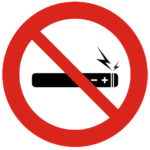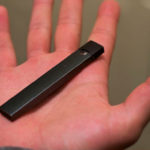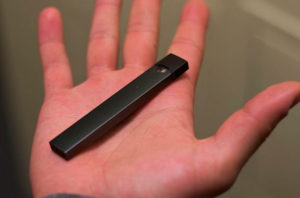Public health professionals, healthcare providers, and parents around the country were overjoyed when the Federal government banned flavored vaping products in February of this year. One of the most popular brands, Juul, had already pulled its flavored pods off the market in October 2019.
With the recent rapid increase in teen vaping, the new ban provided another pathway to limit their access to nicotine and its negative health effects.
Loophole in Federal Ban of Flavored Vaping Liquids
As it turns out flavored vaping products are still for sale – in disposable versions which are not excluded by the recent ban. These disposable products are designed for one time use and are available in many kid-friendly flavors.
Brands such as Puff Bar, blu, and Posh all sell disposable products for teens craving a vaping fix – with flavors like pink lemonade, mighty mint and mango bomb.
These new disposable vaping products are inexpensive and widely available.
Teen Vaping Statistics
The 2019 Youth Tobacco Survey revealed that 25% of HS students have vaped in the last 30 days. This is up from 21% the previous year, and double the rate in 2016.
Sweet and fruity flavors in vaping liquids cut the harshness of the tobacco. Researchers conclude that this will lead to users inhaling more deeply and in the process absorbing even higher amounts of nicotine versus a normal cigarette.
Advice for Parents
 Lead with information not accusations. If you suspect your teen is vaping or might have friends who are, start with the facts and your concerns versus putting them on the spot with a direct question like, “Are you vaping?”
Lead with information not accusations. If you suspect your teen is vaping or might have friends who are, start with the facts and your concerns versus putting them on the spot with a direct question like, “Are you vaping?”
Do your research. Check out some of the links below and learn about what products are popular, what they look like, and how they can be purchased.
Ask for help and support efforts to quit. Help and support your teen if they want to quit. Seek out online resources like the North Carolina Quit Line or the Truth Initiative.
Additional Resources
The North Carolina Quit Line – E-Cigarette Users
The Truth Initiative – Inspiring Tobacco Free Lives
The Vape Talk – Resources for Parents on Vaping
Parents Against Vaping – Parent ToolKit
It’s Not Just Water Vapor – Risk of Secondhand Vapor Exposure
E-Cigarettes: Continued Health Thread for Youth















 No one should be inhaling any of these toxic substances because they will all cause inflammation in your lungs. Asthma sufferers and those with allergies are especially at risk of exposure to lung irritants. Studies by the National Academies of Science indicate that e-cigarette use increases asthma symptoms such as coughing and wheezing.
No one should be inhaling any of these toxic substances because they will all cause inflammation in your lungs. Asthma sufferers and those with allergies are especially at risk of exposure to lung irritants. Studies by the National Academies of Science indicate that e-cigarette use increases asthma symptoms such as coughing and wheezing. The statistics on the rates of vaping are staggering. In 2018 the CDC reported that 20% of high school students vaped in the past 30 days. Smoking rates in the same age group are actually lower at only 8 percent. The rate of teen smoking continues to fall; it is 50% lower than it was in 2011.
The statistics on the rates of vaping are staggering. In 2018 the CDC reported that 20% of high school students vaped in the past 30 days. Smoking rates in the same age group are actually lower at only 8 percent. The rate of teen smoking continues to fall; it is 50% lower than it was in 2011.










